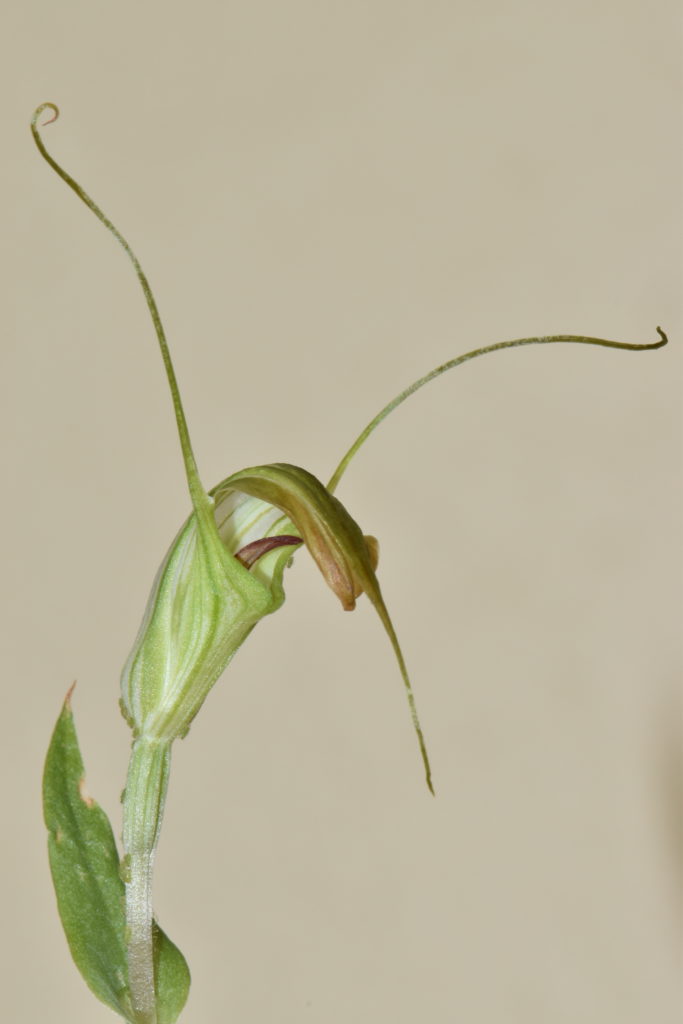Powered by rapid advances in DNA sequencing, CSIRO is unlocking biological collections to discover how species have responded to past environmental change. As part of this work, we used preserved plant specimens to trace the evolutionary journey of greenhood orchids in Australia. We found that greenhood orchids possess a remarkable degree of niche conservatism. They have largely remained within their ancestral ecological niche, the Australian mesic biome. We also found that most greenhood species present today evolved quite recently.
Orchids in Australia

Australia harbours a rich and highly diverse orchid flora. There are more than 1,800 species, of which 90 per cent occur nowhere else in the world. Orchids have evolved highly specialised ecological interactions with other organisms, such as with very specific pollinators. However, these complex and highly specialised relationships make orchids vulnerable to environmental change. Many Australian orchids are rare and threatened, with around one out of seven threatened plant species in Australia being orchids.
To understand how the Australian orchid flora evolved over time and responded to past climatic and environmental changes, we studied one of Australia’s largest groups of ground orchids, the greenhood orchids (Pterostylis alliance). Their common name refers the shape of their flowers, which form a characteristic cap-like structure. These orchids are able to survive periods of unfavourable environmental conditions, such as during Australia’s hot and dry summers, thanks to their underground tubers.
Studying greenhoods in collections
Our team sampled tiny amounts of leaf tissue from the precious plant collections housed at CSIRO’s National Research Collections Australia to generate genomic data. The data enabled us to map out evolutionary relationships among these orchids and estimate the timeframes over which the different orchid lineages evolved. Combined with today’s occurrence records that show where they grow in the wild, we reconstructed the evolutionary journey of these orchids.
We traced back the evolutionary origins of greenhood orchids to 32 million years ago, at the beginning of Oligocene. This is shortly after Australia completely separated from Antarctica, which resulted in the onset of a new sea current around the south pole, and subsequently in profound changes in the world’s climate and the vegetation of Australia.
We found that of all major greenhood orchid lineages arose while Australia travelled north to today’s geographic position during the Miocene. During this time, the Australian continent experienced increased aridification and seasonality, resulting in strong vegetational changes from rainforest to more open sclerophyllous vegetation.
A recent origin
Our research showed that the majority of today’s greenhood orchid species are of remarkably young origin, having evolved only over the past 2.5 million years. During much of this time, the Australian environment experienced rapid climatic oscillations which may have acted as important driver of speciation in these orchids.
Other important findings of the study were that greenhood orchids evolved mainly within their ancestral range in eastern Australia and showed a high degree of niche conservatism being largely confined to their ancestral ecological niche, the mesic biome.
Today’s distributions of greenhood orchids in other Australasian regions, such as New Zealand and New Caledonia, were found to be of more recent origin, resulting from long-distance travel of tiny dust-like seeds over the Pacific Ocean.
The findings of this study are important for our understanding past impacts of climatic and environmental changes on Australia’s plant diversity to inform conservation management in a changing world.
You can find the research paper Evolutionary Relationships and Range Evolution of Greenhood Orchids (Subtribe Pterostylidinae): Insights from Plastid Phylogenomics online. The authors thank the Australian Biological Resources Study and the Australian Orchid Foundation for providing funding for their research. The authors acknowledge the contribution of Bioplatforms Australia in the generation of data for this study. Bioplatforms Australia is enabled by NCRIS.
Dr Katharina Nargar leads the orchid research program at the Australian Tropical Herbarium, a joint venture between CSIRO, Australian and Queensland Governments and James Cook University.
Dr Mark Clements is orchid taxonomist at the Centre for Australian National Biodiversity Research, a joint venture between Parks Australia’s Australian National Botanic Gardens and the National Research Collections Australia at CSIRO.
